Can you say "Szlak Orlich Gniazd"?
⬅ previous ⬆intro next ➡Day 6 ~ 3 July ~ Podzamcze
We must see the castle!
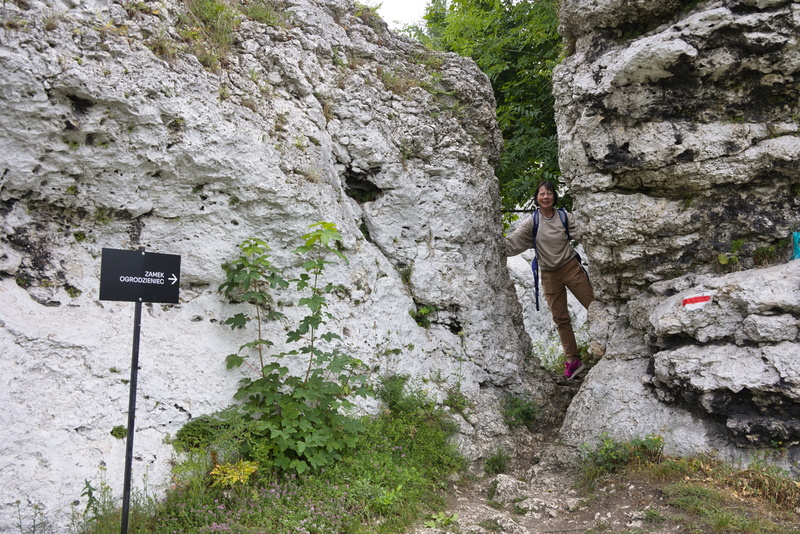
There's a shortcut from the hotel through a gap in the rocks but we will have a little stroll around the hotel grounds first.
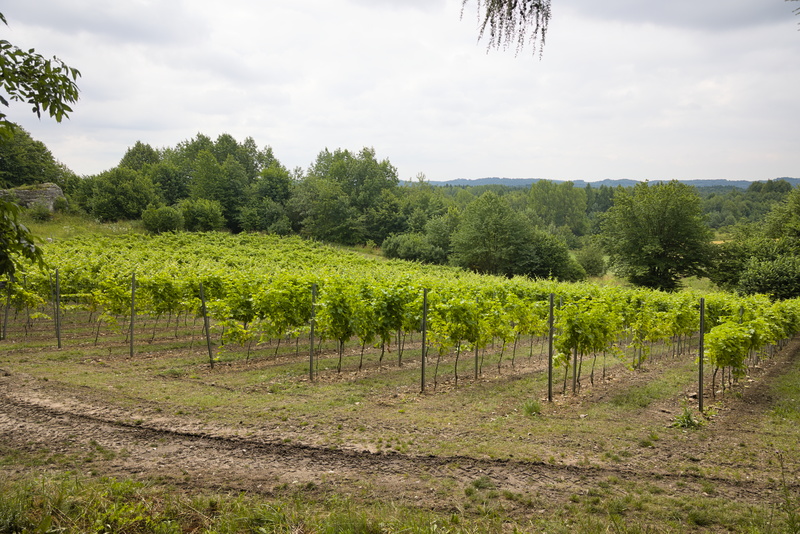
In particular, we'll check out their vineyard
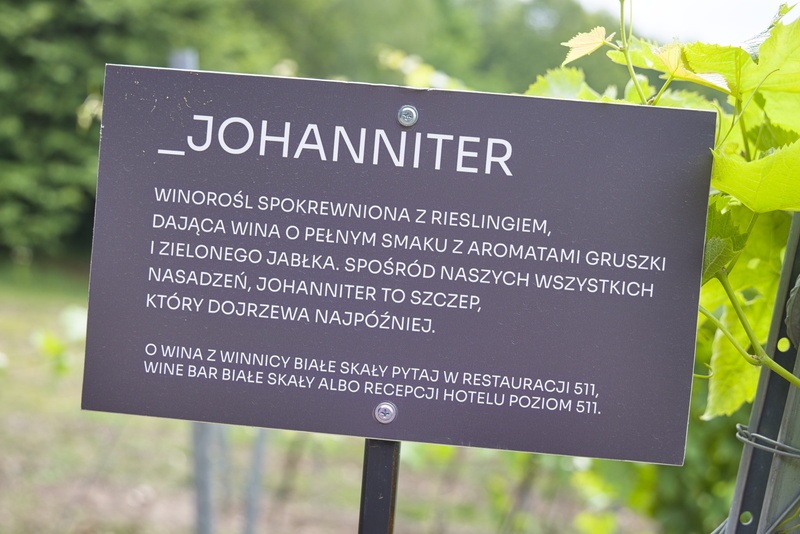
We will ask Google Translate what this means:
JOHANNITERWe may just do that.
VINE RELATED TO RIESLING, GIVING A FULL-FLAVORED WINE WITH AROMAS OF PEAR AND GREEN APPLE. OF ALL OUR PLANTINGS, JOHANNITER IS THE GRAPE THAT MATURES THE LATEST.
ABOUT WINE FROM THE BIAŁE SKAŁY VINEYARD, ASK AT THE 511 RESTAURANT, WINE BAR BIAŁE SKAŁY OR THE RECEPTION OF THE LEVEL 511 HOTEL.
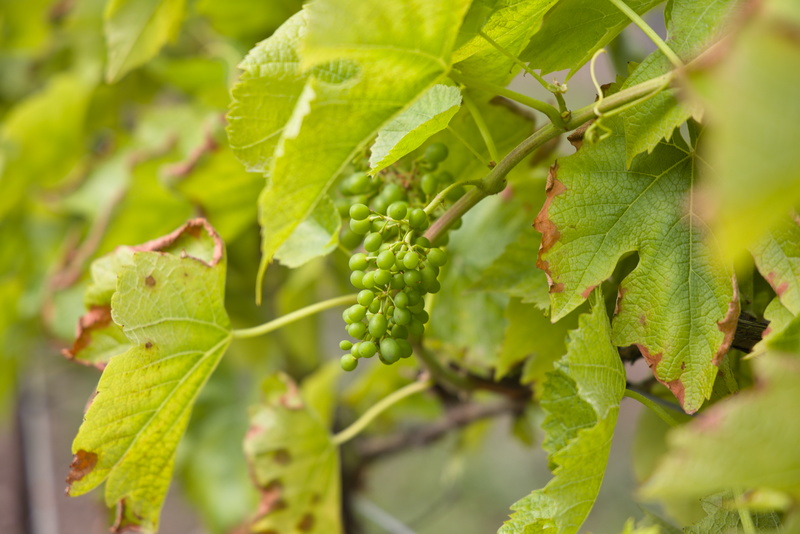
The grapes are growing, but a long way from harvest yet.
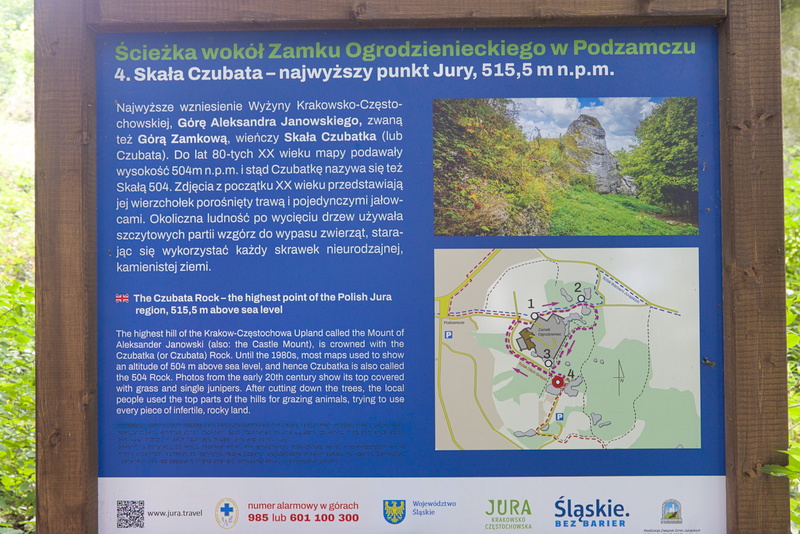
Back on our way to the castle. Gosh! A sign with English on it! This is not unheard of, but it's certainly not common.
I have a picture of the said rock, but it's a bit boring really. There are better rocks to be seen in the vicinity.
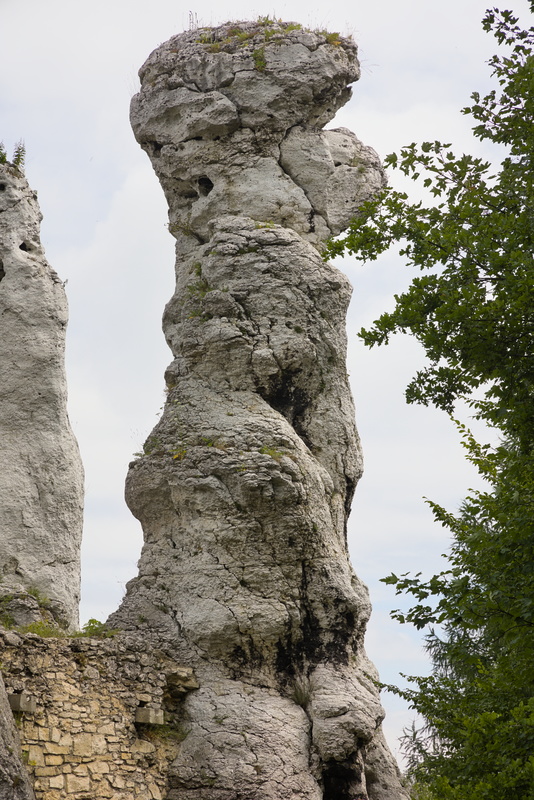
This one, for example, just on the edge of the castle; you can see a bit of the wall here.
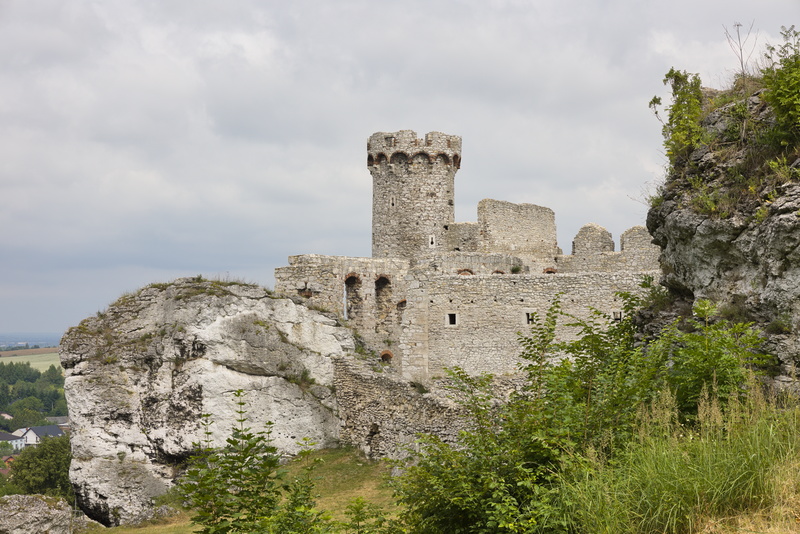
We're coming from the opposite side to where the entrance is, so we get to see it from several different angles as we walk down.
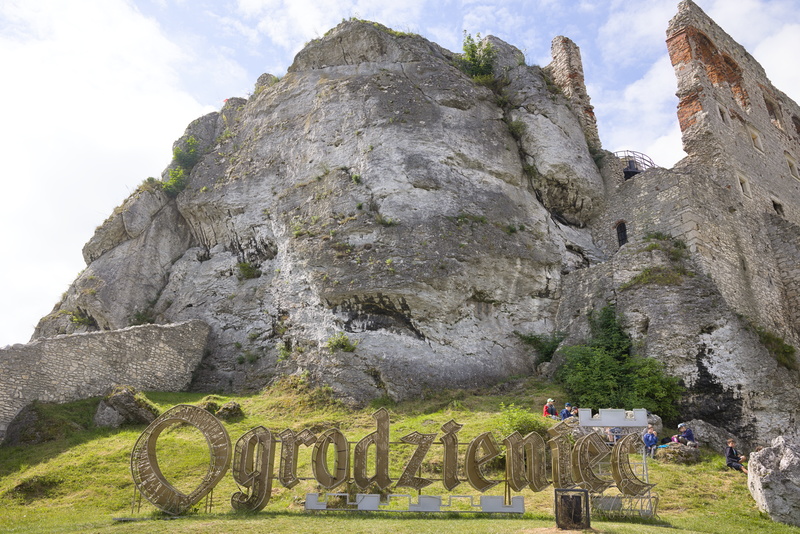
Yep, we're definitely near now! That "Ogrodzieniec" sign is a dead giveaway.
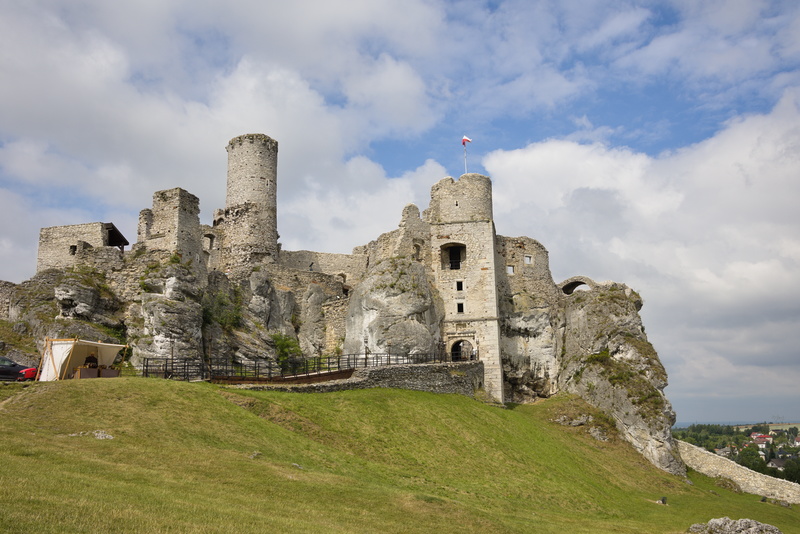
And this is what it looks like approaching from the main gate.
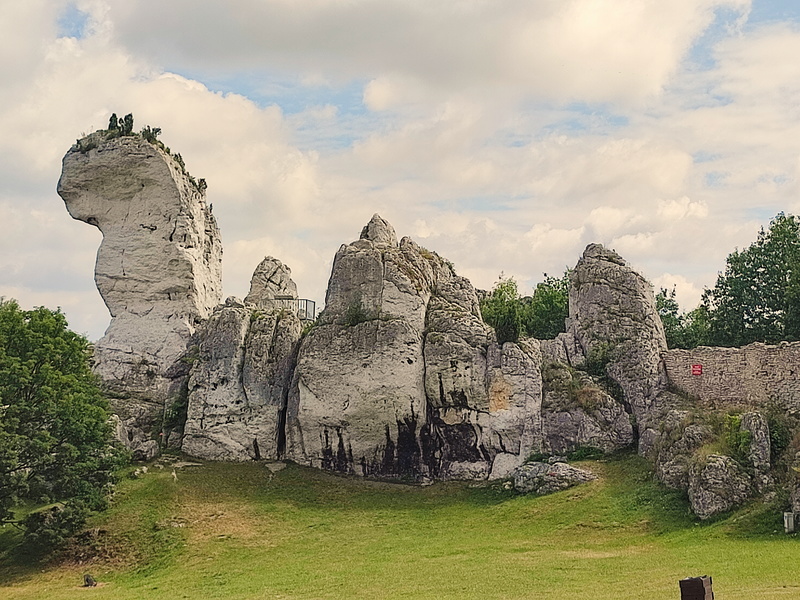
It's the Loch Ness Monster rock! [It may have another name in Polish.]
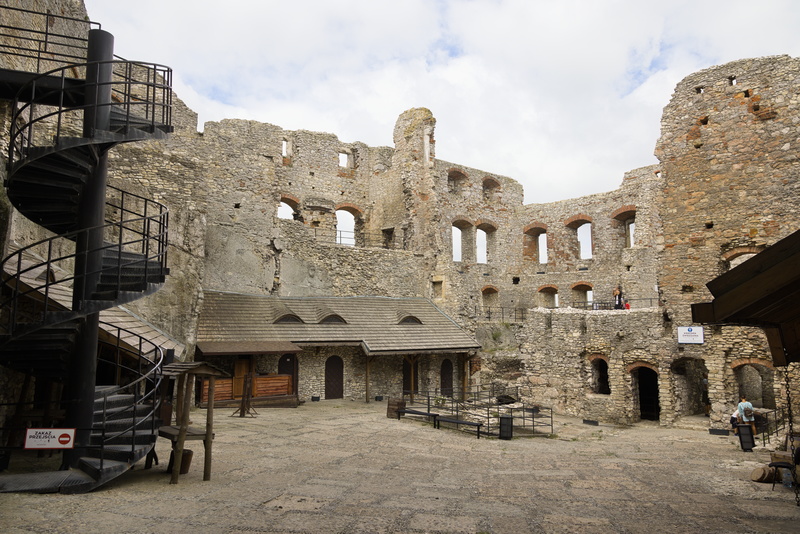
There's not a huge amount of internal structure left, and much has been reconstructed but there's still plenty to see.
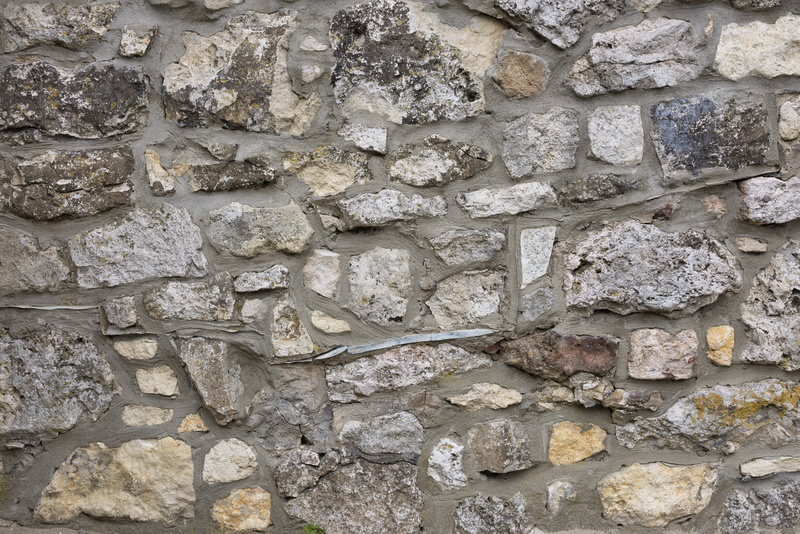
Metal sheets embedded in the walls are from 20th Century reconstruction works.
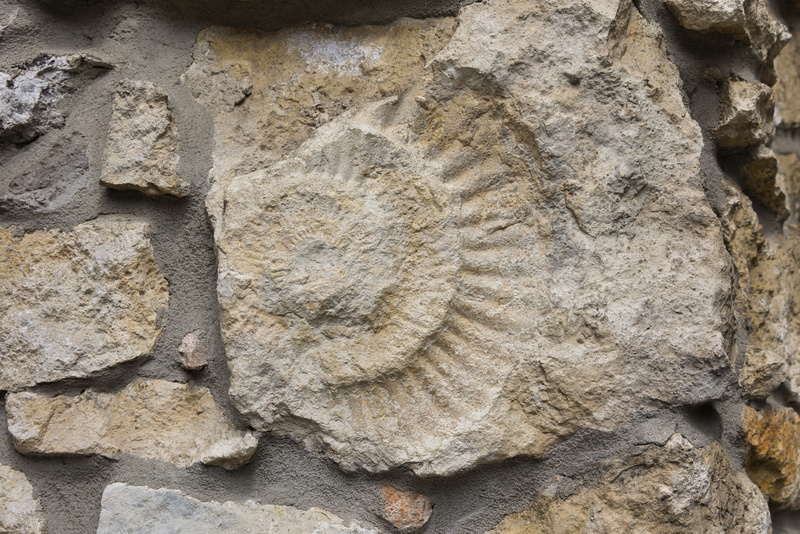
Ammonite fossils in the Jurassic limestone. They didn't feature much in "Jurassic Park" and its sequels - I suppose it's unlikely that many people would have paid good money just to watch CGI ammonites swimming in a CGI ocean, and equipping them with giant teeth and claws would have been taking just too many liberties with the paleontology. They are totally unrelated to dinosaurs, but the same asteroid killed them all 66-odd million years back. The Natural History Museum has lots to say about ammonites here.
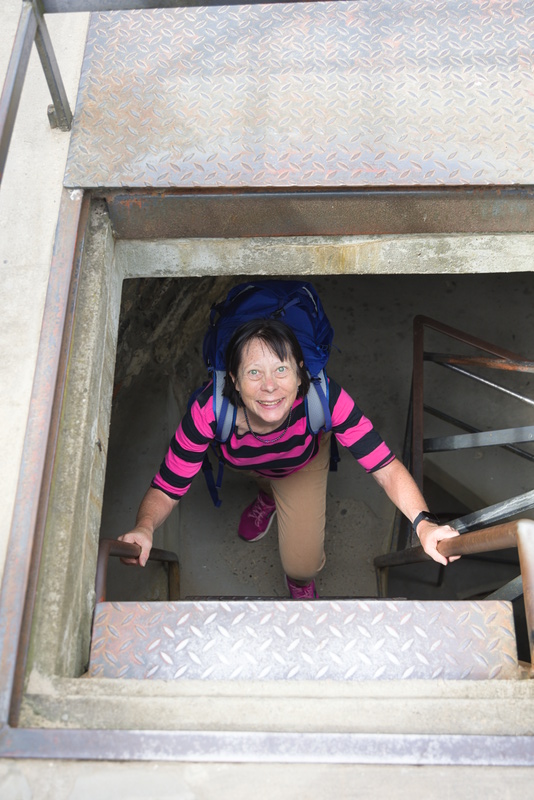
We climb the tallest tower still standing.
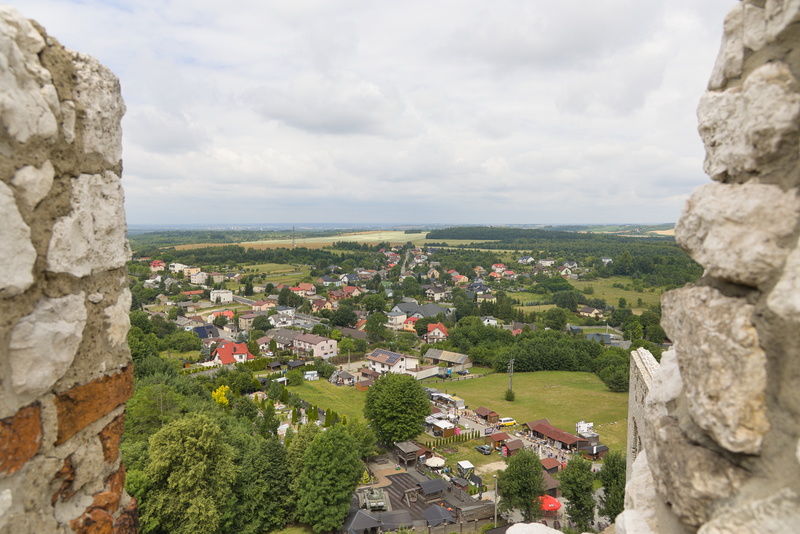
The countryside definitely looks flatter from here than it does from a bicycle!
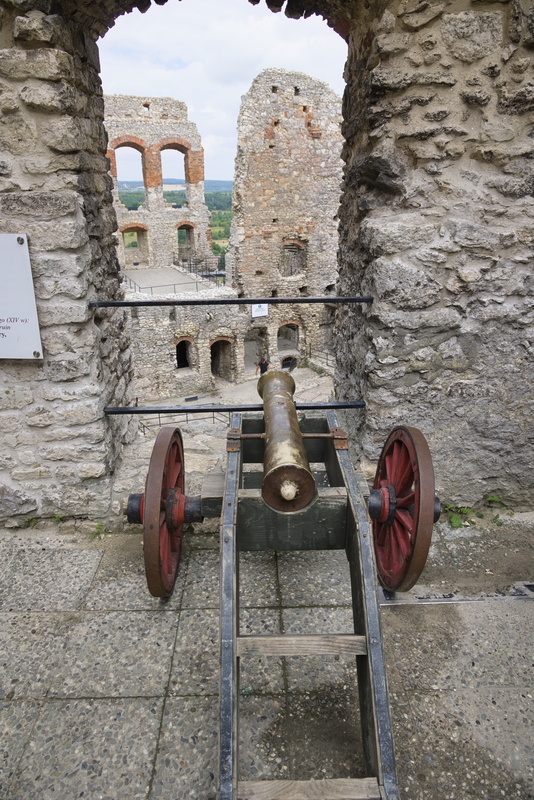
I think this cannon was probably not designed to shoot people inside the castle; I think it's just been put here for display without regard for the context. I could be wrong, though: maybe mediaeval Polish parents threatened to blast their wayward children into oblivion if they didn't eat their greens.
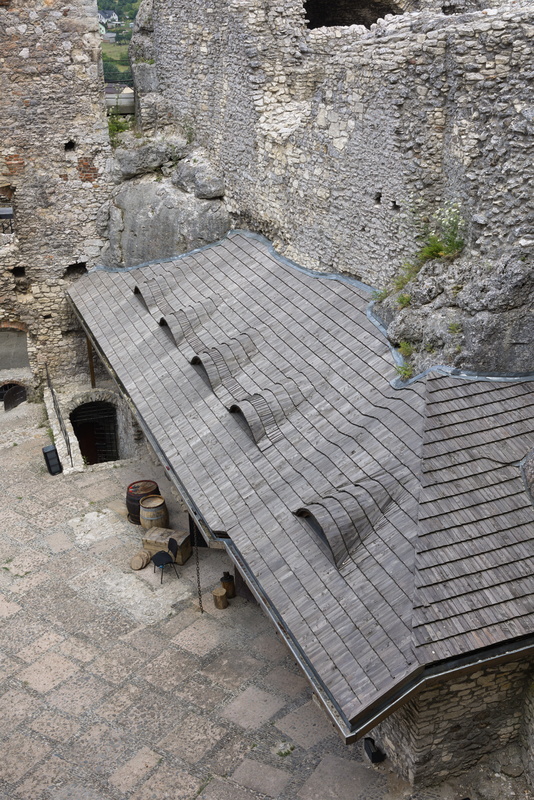
We do like this (obviously modern) wooden shingled roof.
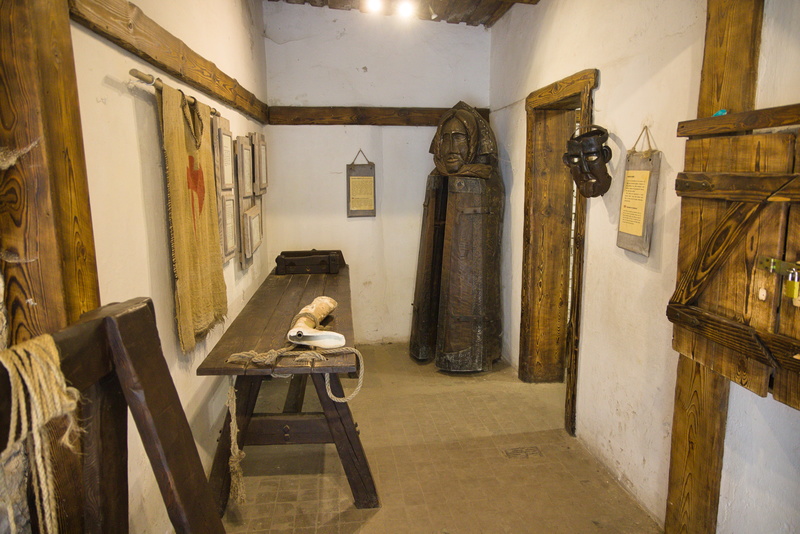
The torture chamber exhibition.
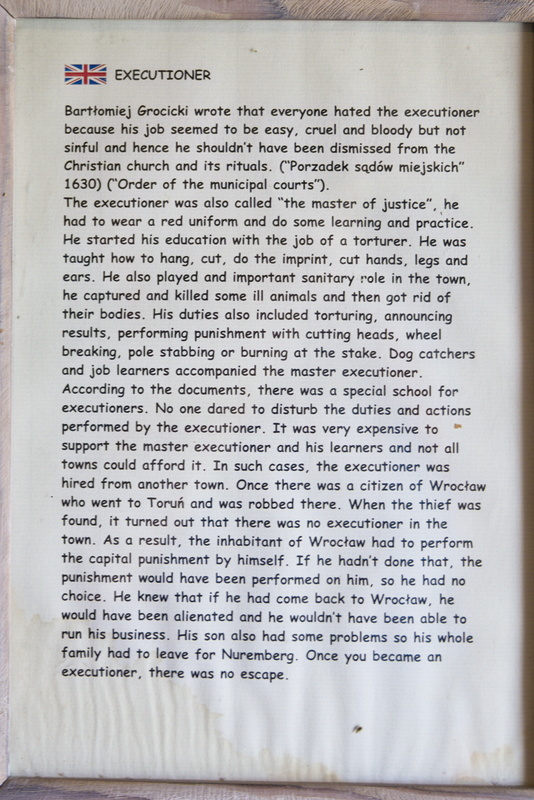
And some fascinating information about torture and execution as a professional career.
Next, we're visiting the nearby wooden hill fort on Mount Birów. It's only a couple of km from the castle and there's also supposed to be a good rock to walk up with a fine view back on the way.
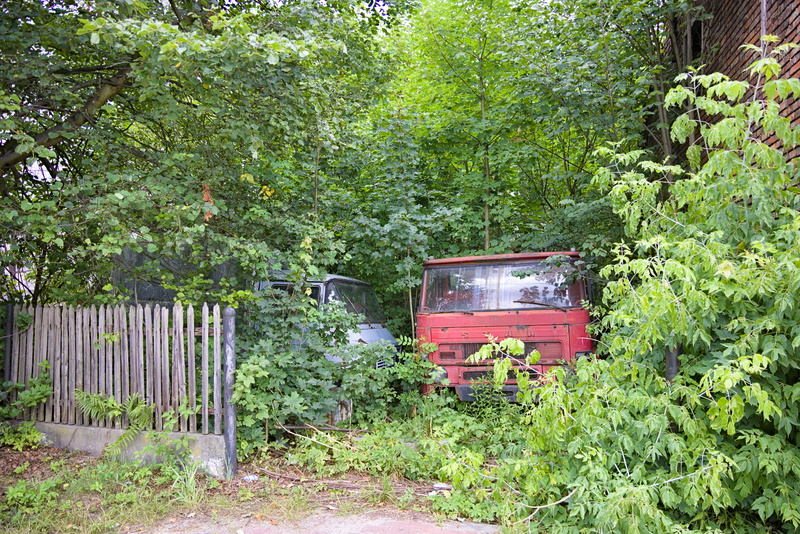
A momentary digression... They've been parked there a while. Google Street View goes back to September 2012, when it was a lot less overgrown but the trucks were there even then.
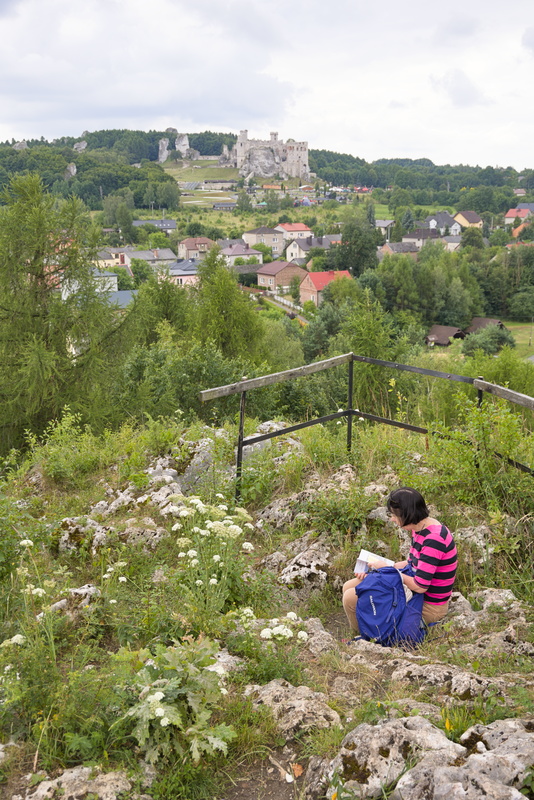
And here is the view from the aforementioned rock. Amanda is consulting the trip notes for something.
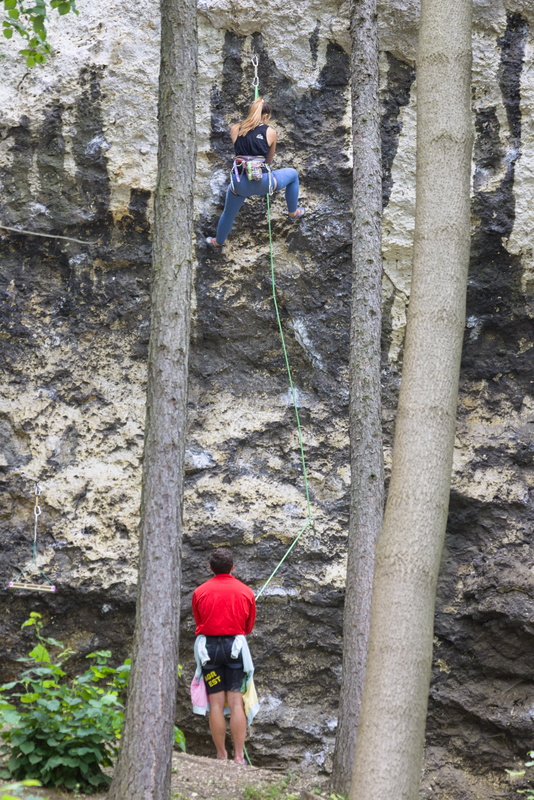
Around every corner in the Jura, we seem to find people practicing their rock climbing. I won't swear to it, but this looks like some chap trying to teach his girlfriend a particular technique to get past the point where the rope is looped through the anchor point at the top of the picture. Either he's a poor teacher or she's a slow learner because she keeps losing her grip and falls back dangling on the rope as she's just done here.
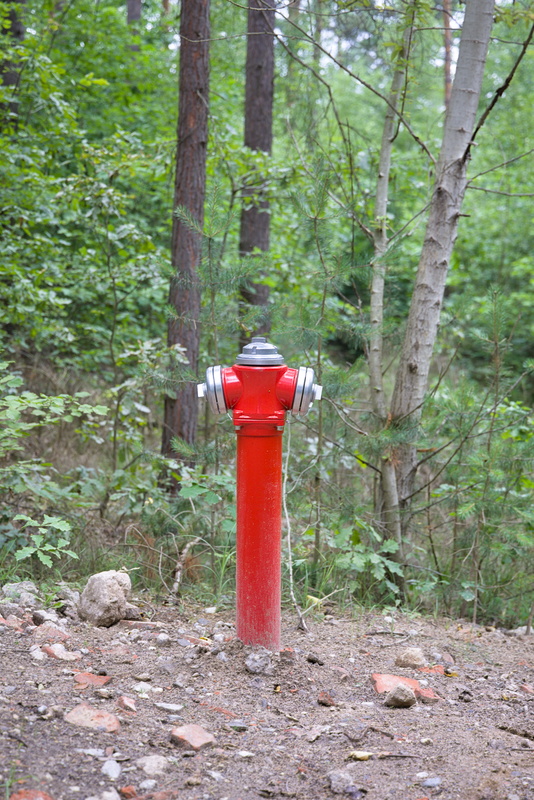
You don't expect to come across a fire hydrant in the middle of a forest, but it's definitely a thing in these parts. Right now, we've got mostly decent but definitely mixed weather so there seems little danger of fire, but maybe in the height of a dry summer it's different.
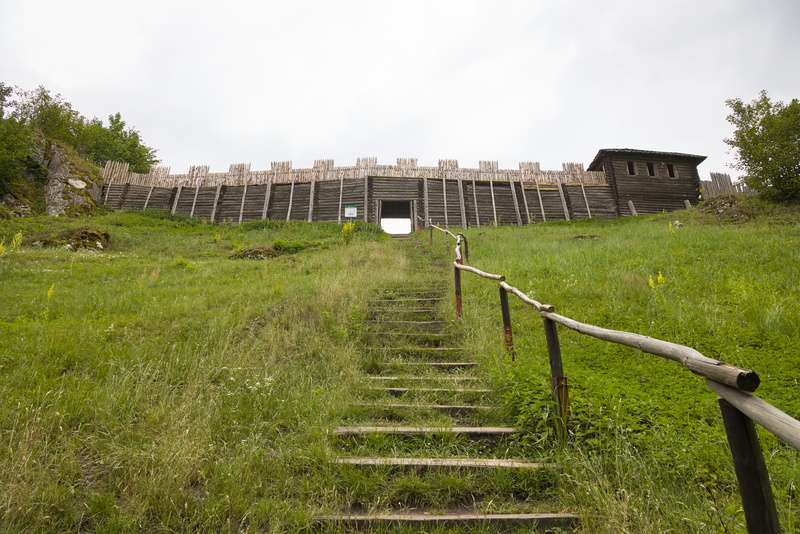
There's a long steep stairway up to the hill fort. This perspective doesn't really show it well.

This is a much better impression.
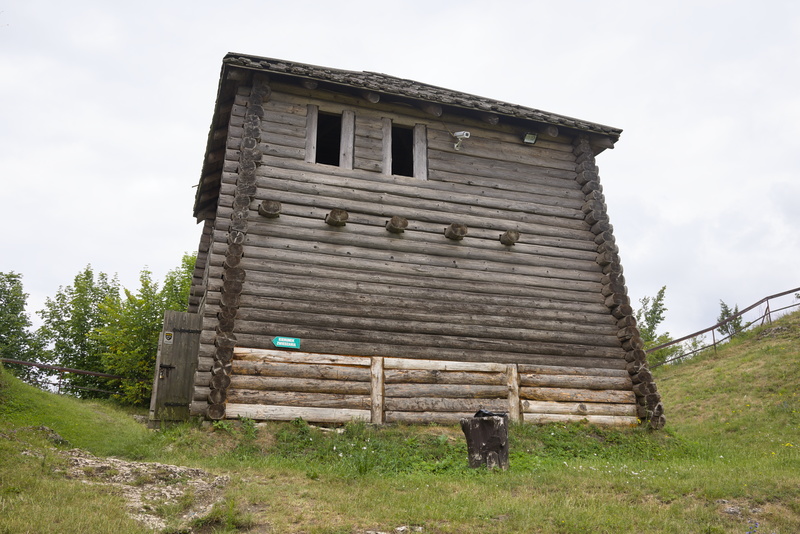
Inside there are several wooden buildings of mediaeval overall design but definitely using a lot of modern fasteners, hinges, etc.
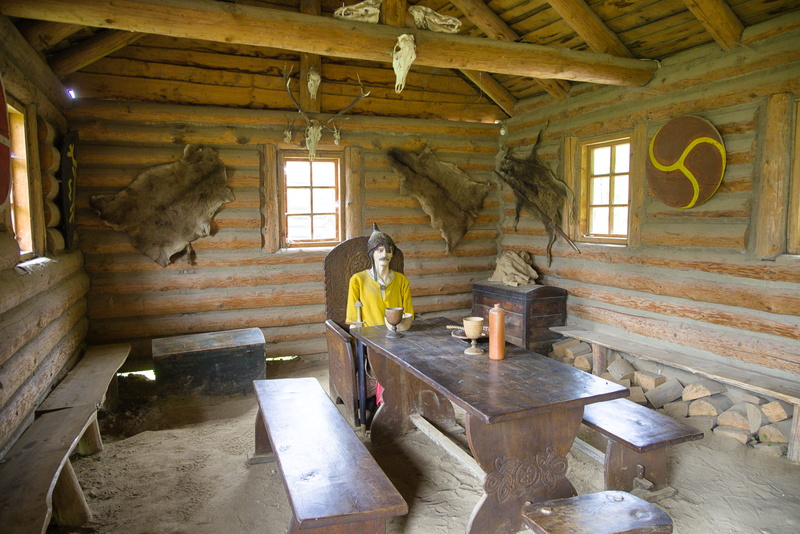
Hard to tell how accurately they've dressed the interior. I suspect that 13th century peasants would have had better uses for animal skins than to display them as wall decorations.
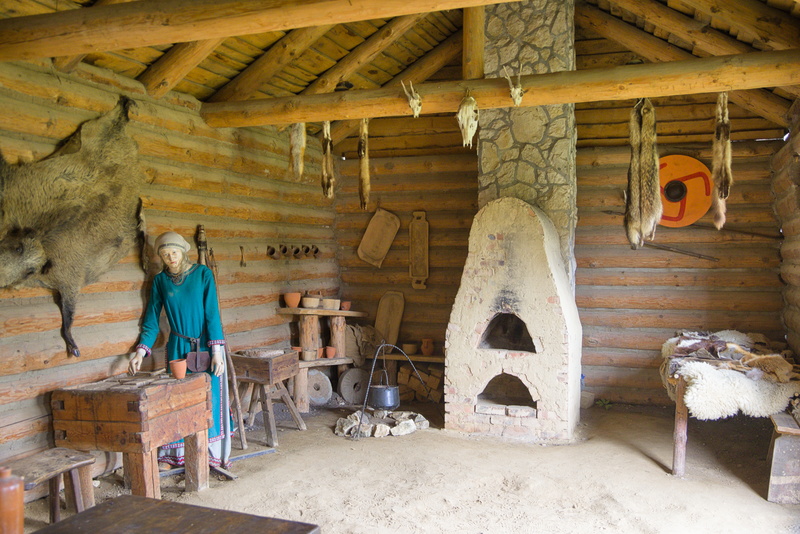
And while the lord sits at his table drinking his mead, looks like his wife is doing all the work in the kitchen.
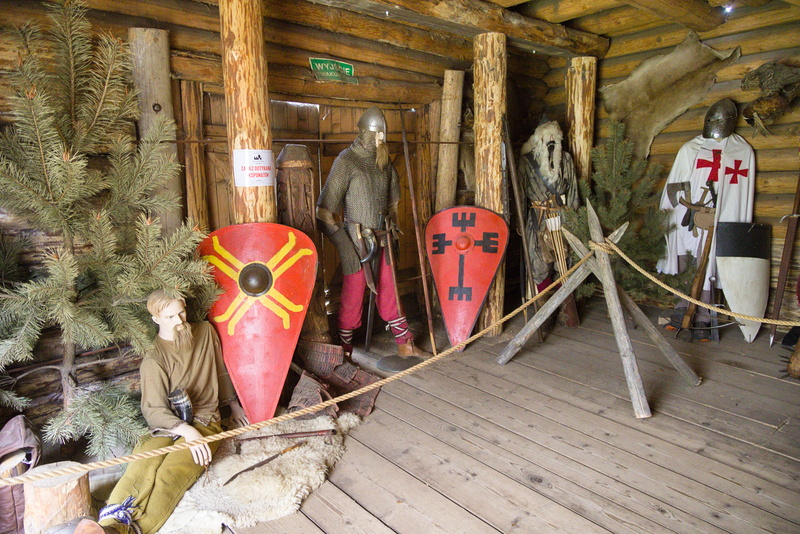
This, I think, is just an exhibition of related items rather than any kind of reconstructed scene.
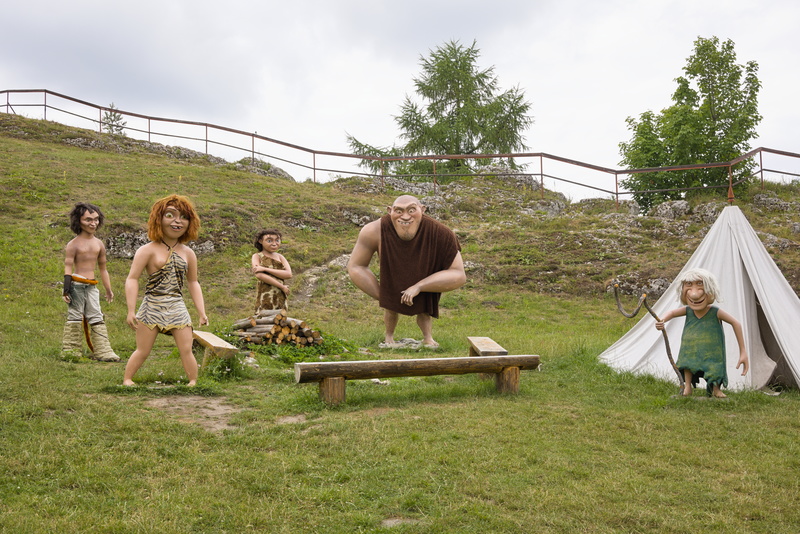
Ok, now this I'm not sure I have words for!
It's noticeable that other people's photos online don't seem to have this little family group, nor is it visible in the Google Maps satellite view. It's obviously a recent addition. The archeological evidence has people living here from 30,000 years ago, so I'm guessing that this is meant to be a Neolithic scene, but why the goonish caricatures I have no idea. I would have little difficulty believing the central figure was originally meant to be Gru, the supervillain from "Despicable Me", but I fear I may be indulging in unsupported speculation again. I really should stop that, but I very much doubt that I will.
The official website (it's part of the Ogrodzieniec castle operation) is very light on specifics, limiting itself mainly to saying how wonderful the place is for history lovers.
We continue walking around the area...
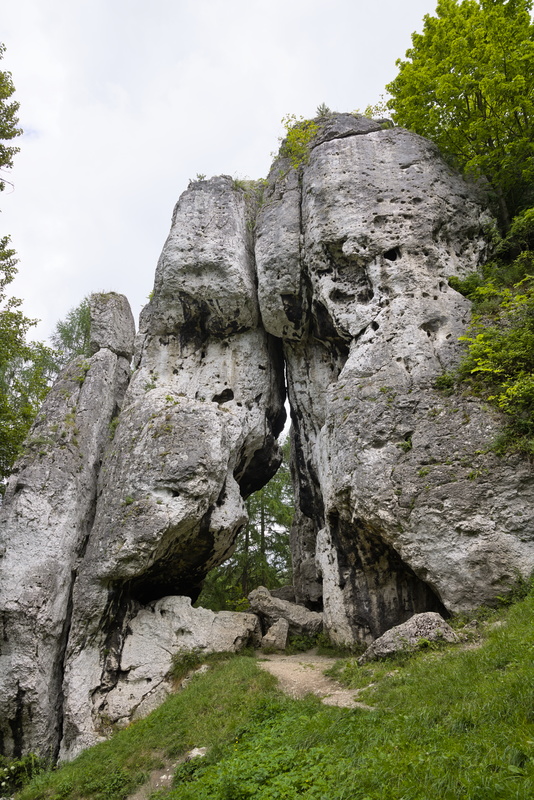
More good rocks; and only a moment or two ago, a girl was packing up her rock cliimbing gear before leaving. Her partner had already all but disappeared into the distance. Could it be: a) he got fed up waiting for her; or b) he was going to get the car warmed up and prepare lunch for her; or c) he'd banged his head on the rocks, got amnesia and completely forgotten he was with someone? Or d) invent your own story?
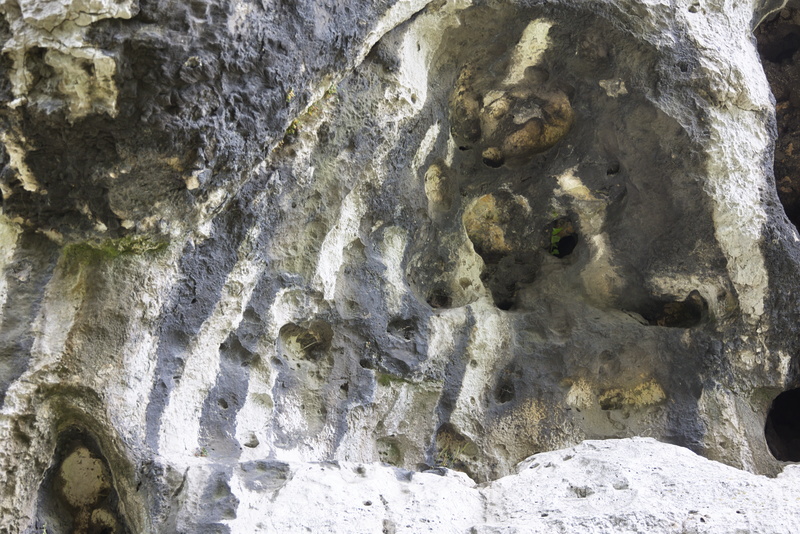
One for the geologists. Stripy strata and erosion.

And to redress the balance for those more dendrologically inclined, we do like these bark patterns,
Back into town now.
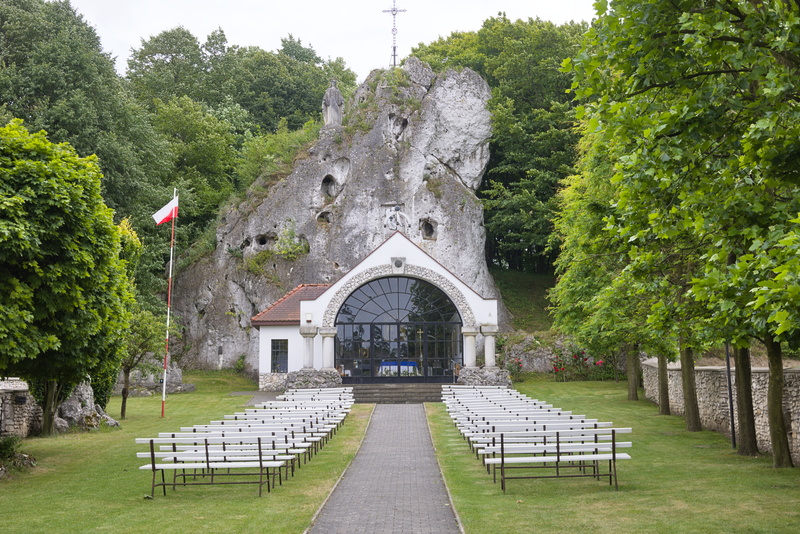
The "Sanktuarium Matki Bożej Skałkowej" is built against a rock where St Mary is said to have appeared to a local in 1818. It's not actually cut into the rock, but it's very small; there's almost no space inside, hence the seats for an outdoor congregation. The first chapel here was built in the 1950s but this building dates from the year 2000.
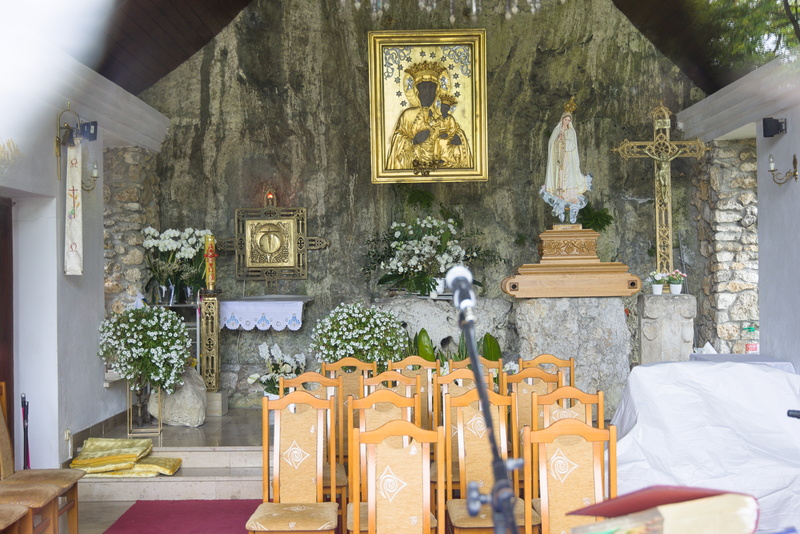
The view through the window; small indeed.
You can read all about it here, but don't choose the "English" dropdown, you will get far more information if you accept "Polski" and get Google to translate it for you!
And we return to the hotel.
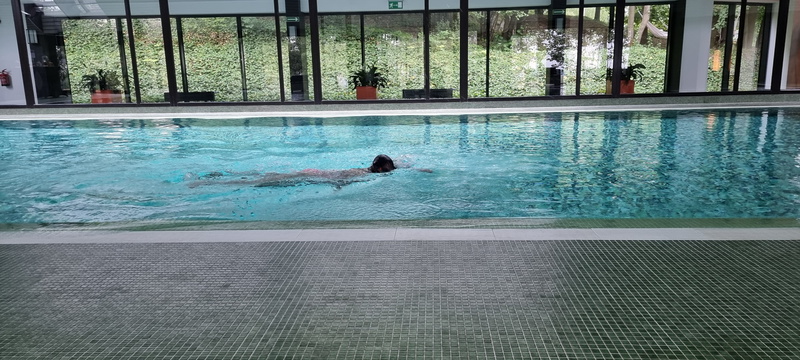
Amanda wants a swim. They have a decent pool here and she has it entirely to herself.
Passing reception on the way back to our room, we think it would be nice to buy some of the hotel's wines to take home.
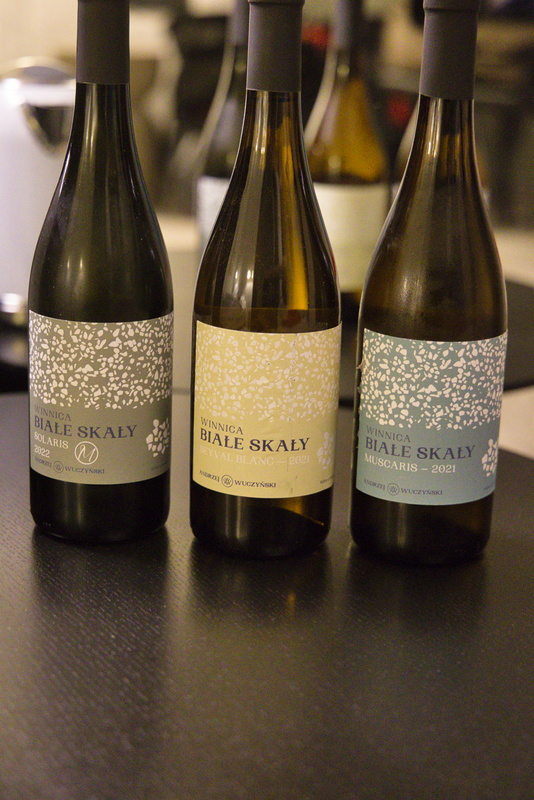
We'll have a trio: Solaris, Seyval Blanc and Muscaris.
Now if you're pretty knowledgable about wine, you'll know Seyval Blanc as one of the grapes that regularly feature in English wine, being better suited to a cooler climate than most better-known names, but if you are familiar with Solaris and/or Muscaris, then I am seriously impressed. Despite their obscurity (to us at least) they are excellent wines based on our experience at dinner last night.
Unsurprisingly, they don't seem to have any international sales presence, but should you happen to be passing by, we would give a solid 'buy' rating.
[Having said that, climate change is making Southern England a lot more hospitable to some of those better-known names, and things like English Chardonnay are now a reality in a way which simply wasn't the case a couple of decades ago.]
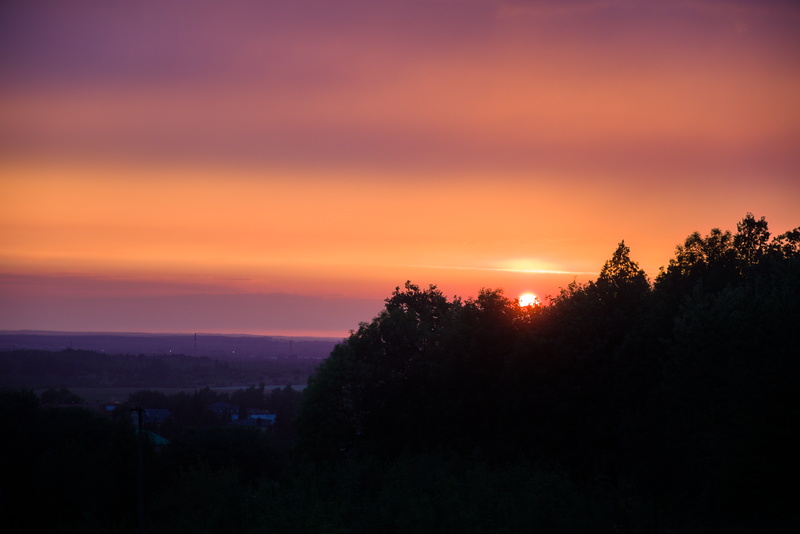
We look out on a fine sunset from our room.
And remember way back I said that Iga had given us a bottle of wine to say sorry for the Kraków room?
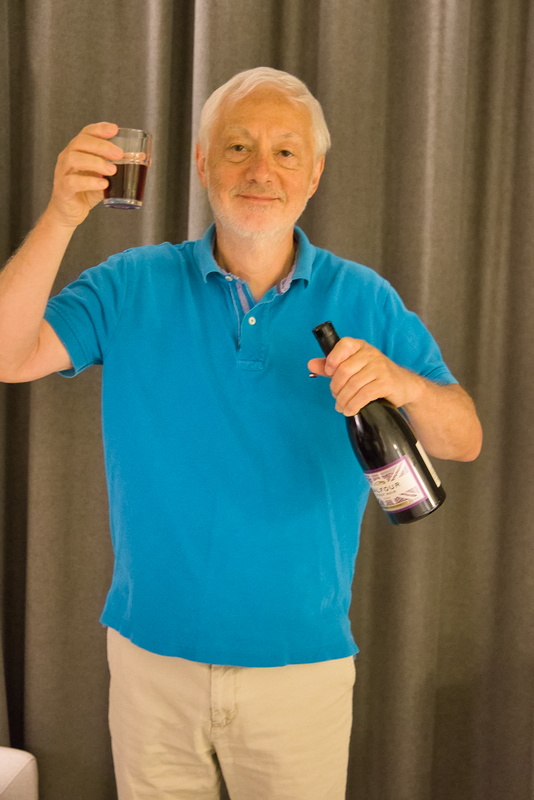
Cheers!
Thanks Iga!
Another fine dinner in the restaurant, and it's time for bed.
⬅ previous ⬆intro next ➡